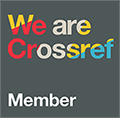Mathematics Teachers' Views on Synchronous Distance Education
DOI:
https://doi.org/10.33308/26674874.2022362401Keywords:
Distance Education, Online Education, COVID 19, Mathematics TeachersAbstract
The aim of this study was to determine the views of mathematics teachers who have conducted their lessons using synchronous distance education applications during the period of the COVID-19 pandemic about this form of education. The study was carried out as a qualitative case study. The working group consisted of 12 volunteer mathematics teachers who had been conducting their classes with synchronous distance education applications. Data were collected through a semi-structured interview. The content analysis method was used in the analysis of data. According to the teachers, synchronous distance education is advantageous in terms of use of technology, physical health, and time, while it has disadvantages including the lessons being tiring for teachers, problems with the technological tools and infrastructure, teachers' working hours being over-extended, a lack of communication and interaction, indifference from the students, and incomplete learning. It was concluded that the mathematics teachers preferred the face-to-face education model for their mathematics lessons, while a small number of them preferred the mixed model in which face-to-face education and distance education were combined.
Downloads
Downloads
Published
How to Cite
Issue
Section
License
Copyright (c) 2022 Journal of Education for Life

This work is licensed under a Creative Commons Attribution-NonCommercial-NoDerivatives 4.0 International License.
I accept that the Owner of Journal of Education for Life, the Editor, Associate Editors, Reviewers and the Editorial Board cannot be hold responsible regarding the scope, the findings, the discussion and conclusion of the manuscript submitted.
I declare to the editorship of Journal of Education for Life that the manuscript is original and has not been published anywhere else or is not under evaluation process for any other journal.
I approve that I grant Journal of Education for Life as the sole and exclusive right and license to publish for the full legal term of copyright of my manuscript concurring with article 5846 / 22-23-25 while I retain copyright in the work.





